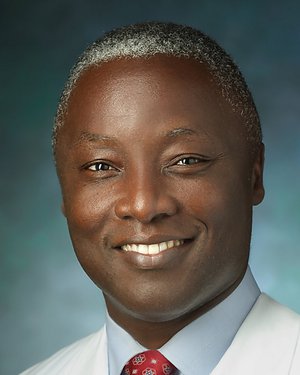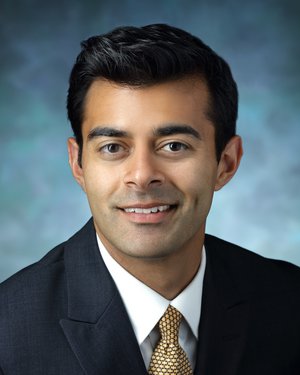Treatments and Procedures: Scar Revision
Skin injury that affects multiple layers of skin, whether due to trauma, surgery, burns, acne or other conditions, can result in scarring that affects both appearance and function. Once a scar forms, it is permanent, but skillful scar treatment can restore mobility of the face and make the appearance of scars less obvious.
Face and Neck Scar Revision: What You Need to Know
Kofi Boahene, a Johns Hopkins facial plastic and reconstructive surgeon, explains the "Need to Know" about the types of scars of the face and neck that can be revised, timing of scar removal, and special approaches for ethnic skin scar revision.
Scar Revision: Why Choose Johns Hopkins Facial Plastic and Reconstructive Surgery?
- The large number of patients we see and the experience of our faculty ensure superior skill and expertise in minimizing facial scars.
- Our surgeons work with patients of many different ethnicities and can recommend suitable approaches for all skin types.
- We offer a warm, compassionate environment for patients, with clear communication throughout each step of the treatment.
- The team is dedicated to safeguarding each patient’s well-being and health while helping them feel attractive and confident.
Request An Appointment
Schedule by phone
New and existing patients: 410-616-7191
Submit a request online
You may also request an appointment by filling out this form.
Scar Revision: What to Expect
Consultation
The surgeon will examine your face and take a medical history, including the circumstances and mechanism of injury that resulted in the scar formation. The exam will also note location of the scar, its type (burn, keloid or hypertrophic scar, for example) and its impact on your facial muscles, tendons and facial expressions.
Timing is important as well. In some cases, the surgeon may advise against scar revision for an injury that has not fully healed, which can take a year or more.
Your consultation is essential to your realistic expectations of what treatment may and may not achieve. It is important to understand that there is no way to remove scars completely. However, the surgeon can recommend a plan to disguise the scar, relocate it or minimize its appearance, while restoring as much function to the facial features as possible.
Scar Revision Surgery
For contracture scars, surgery generally involves removing the scar tissue entirely. The surgeon then lifts a flap of adjacent healthy, unscarred skin and moves it to form a new incision line.
Where a flap is not possible, the surgeon may opt for a skin graft. A graft involves completely detaching a section of skin tissue from one area and attaching it to another, using specialized techniques to encourage new blood vessels and soft tissue to form.
Z-plasty is a method to move a scar from one area to another, usually into a natural fold or crease in the skin to minimize its visibility. While Z-plasty does not remove all signs of a scar, it does make it less noticeable.
Dermabrasion and laser resurfacing can make rough or elevated scars less prominent by removing part of the upper layers of skin with an abrading tool or laser light. The scar will remain, but it will be smoother and less visible.
Keloid or hypertrophic scars may respond to injections of steroids to reduce the size of the scar. If more reduction is desired, the surgeon can remove the excess tissue surgically, closing the incisions with fine stitches that leave a less prominent scar.
What to Expect After the Surgery
Note: These are general guidelines. Please make sure you fully discuss your questions and expectations for the post-surgery period.
You can expect to feel some discomfort after facial scar revision surgery, and will experience some swelling, bruising and redness.
To ensure the best possible result, it is important for you to follow your surgeon's after care recommendations exactly. Though the sutures will be removed within days after the surgery, your skin will need time to heal, and you may not see the full extent of the improvement for up to a year.
Surgeons generally insist on decreased activity after surgery and will instruct you to keep your head elevated when lying down, to use cold compresses to reduce swelling, and to avoid any activity that places undue stress on the area of the incision. Depending on the type of procedure performed and its location, the facial plastic surgeon will explain the types of activities you should avoid and for how long.
Make sure you have reviewed all your medications with your surgeon and be careful not to take any additional medication without first consulting the surgeon.
Follow-up Care
Follow-up care is vital to monitor the healing of any scar revision procedure. You should report anything unusual to your surgeon immediately. It is essential to keep your follow-up appointments with your surgeon.
Read more about what you should do before and after your scar revision treatment.
Our Physicians
Facial Plastic and Reconstructive Surgery: Johns Hopkins | Q&A
Lisa Ishii, M.D., a Johns Hopkins facial plastic and reconstructive surgeon, answers frequently asked questions about facial cosmetic and reconstructive surgery. She provides information on when and why you should consult a facial plastic surgeon and what you can expect at your first appointment.






